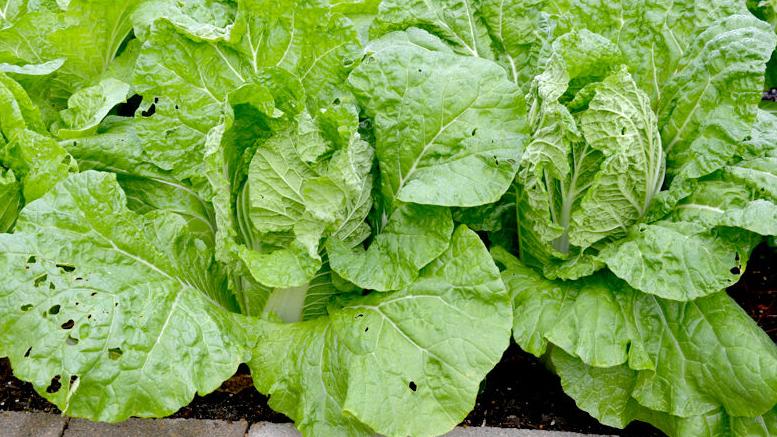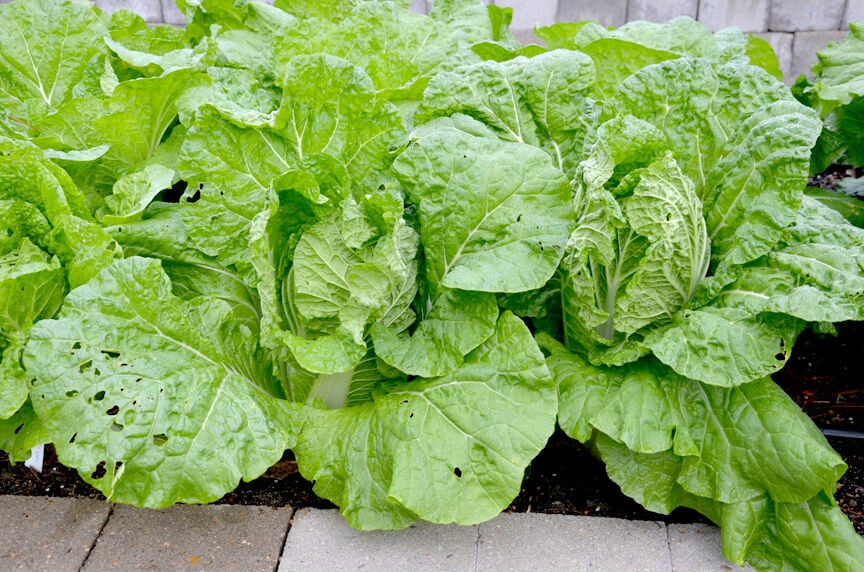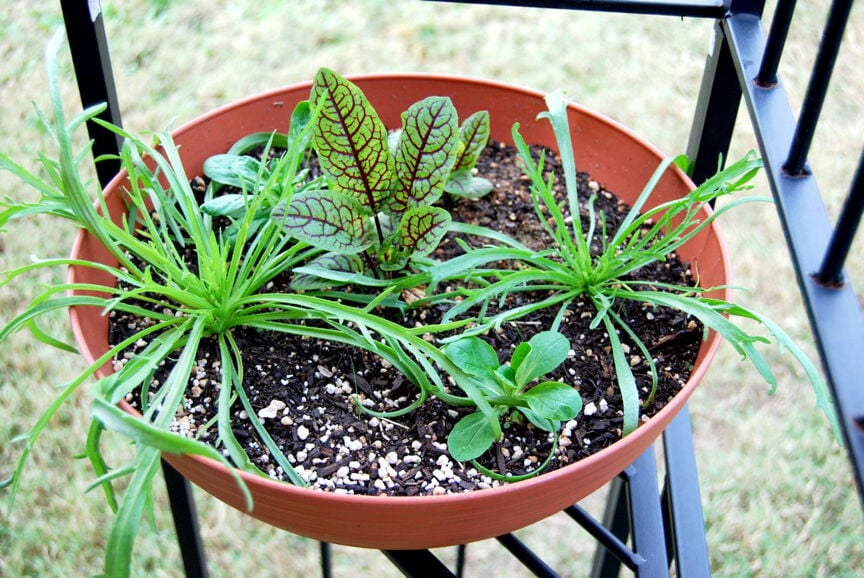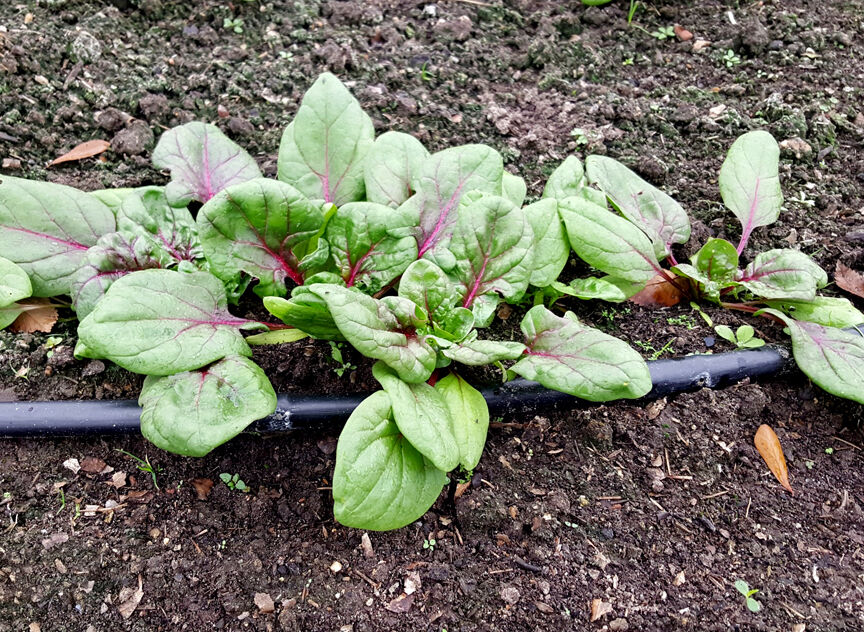
Do you remember when the word “salad” meant chunks of iceberg lettuce and tomato wedges, with perhaps a few carrot shavings or some red cabbage tossed in for color? You had to slather it in a flavorful dressing to get beyond the bland.
Recent years have brought new life to salads with a wide variety of greens and other components that can transform the boring bowl into a nutrient-rich, colorful, health-promoting cornucopia of flavors.
What about your garden? Do those original salad ingredients still rule the rows? There are numerous delicious leafy vegetables adapted to our region that add zest and flavor, even before any salad dressing is added.
Their flavors range from bitter to lemony to nutty to “it’s hard to describe,” so you can mix and match according to your palate’s preferences. Start with a base of lettuce and/or spinach, and then “season” the salad with other greens. I’d be willing to bet that if you’ll give some of these a try, there will be a few that will become an annual part of the garden and change your salads from now on.
Kale has enjoyed a recent celebrity status, even being declared a superfood. When picked very young and tender — and especially during cold weather — kale can add both flavor and nutritional benefits to your salads. Most members of the cabbage family also provide both nutrients and health-promoting compounds, and adding other fresh greens can provide a variety of nutritional benefits.
Arugula (also roquette or rocket) is a richly flavored nutty and somewhat peppery green grows for our fall to spring gardening seasons. Harvest it while still young or it can get too strong, and use sparingly to avoid overpowering the other greens in your salad mix.
Asian greens include a wide array of vegetables that are largely underutilized in most Texas gardens. One of the fastest and simplest to grow is bok choy or pak choi. (Note that many of these Asian greens go by different names in different regions.) Some varieties will reach harvest in just four weeks. These relatives of cabbage can be used in stir fry, soups and other creative ways, such as chopped and added in small amounts as a salad ingredient. They bring a fairly mild cabbage family flavor with a background sweetness.
I love Chinese cabbage, which I would describe as somewhere in between romaine lettuce and cabbage. This plant forms upright heads, and varieties can vary in shape from broad or “barrel-like” to slender. Again, soups and stir fry are two common uses, but I’ve added these mild cabbages as a chopped ingredient to salads.
Radicchio, a popular European vegetable that forms a small head may be too bitter for most palates but can be proportioned in a salad mix to add just the right zing. Leafy endive is another green with some bitterness.
Other leafy greens include mache (aka corn salad), buckhorn plantain, garden cress for a peppery zip and sorrel for its tangy, lemony flavor. Seed companies offer mesclun mixes (a mixture of salad greens harvested young) that are scattered to create a growing mix that you simply harvest with scissors. These mixes of various greens are worth a try, although not all species in a mix will thrive here. My personal preference is to plant the individual species as separate ingredients and then mix them later to suite my tastes.
The foliage of fresh herbs such as dill, fennel and basil can provide unique and delicious flavors, as can chives and green onion leaves.
In addition to diversifying our salads for the culinary and nutritional benefits, salad ingredients can provide aesthetic pizzazz as well. Red cabbage, burgundy kale, red-veined sorrel, “Red Kitten” spinach and numerous types of colorful leaf and bib lettuce can turn a bowlful of green into something really beautiful.
Several flowers are edible and make an interesting garnish to add color to salads. Nasturtiums, calendula petals, daylilies, violas and pansies are but a few of the many floral options. Bloom will deteriorate if washed and stored. Wait to rinse them off until it’s time to make the salad and add them on top of the salad where they can steal the show.
We recently added a spiralizer to our kitchen collection. Now our salads have attractive spirals of summer and winter squashes, sweet potatoes, carrots and more.
October is a prime time for planting cool-season greens. Plant them in small amounts in successions so you’ll always have a fresh batch ready for harvesting.
Try a few new varieties in your garden this fall and winter. I’ll bet you’ll discover a few that you really love. Your home garden salads may never be the same.
Robert “Skip” Richter is the Texas A&M AgriLife Extension Horticulture Agent for Brazos County, 2619 Texas 21 W., Bryan, Texas 77803. For local gardening information and events, visit brazosmg.com. Gardening questions? Call Skip at 823-0129 or email rrichter@ag.tamu.edu.
Get local news delivered to your inbox!
October 02, 2020 at 12:00PM
https://ift.tt/2ESe39i
SKIP RICHTER: Add flavor, beauty to cool-season salads - Bryan-College Station Eagle
https://ift.tt/3ekeW79
salad



No comments:
Post a Comment